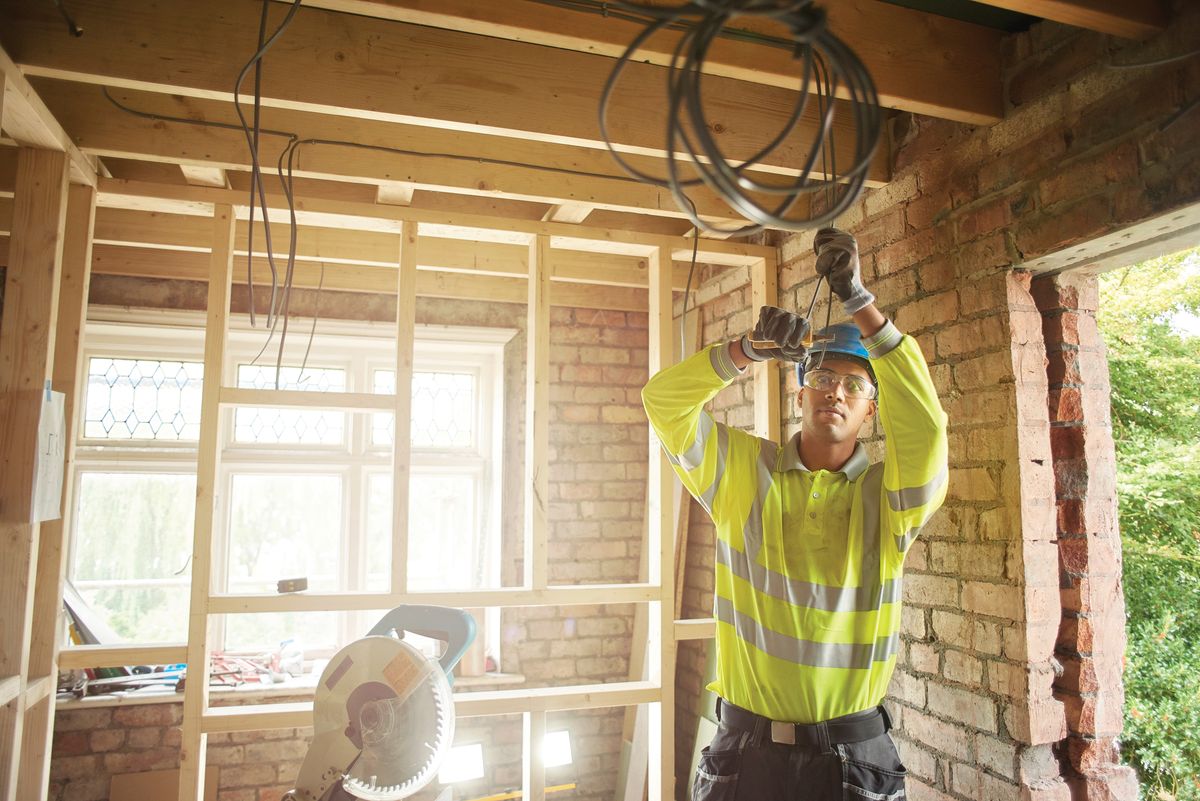Taking Charge - YOUR JOB As a Construction Electrician

Thank an Electrician Today
If you fired up your computer, started up a light, or simply got a cold drink from the refrigerator, chances are there's a construction electrician on the market that you owe thanks. Construction electricians come in charge of installing the conduits and wiring that bring electricity into buildings, offices, and residential structures. Construction electricians may also be in charge of installing signal communication systems, alarms, and other electrical equipment needed to create a structure livable.

What's the work Like?
Although construction electricians usually work inside on construction sites, where they are responsible for installing the electrical hardware of a building or worksite, they may occasionally have to work outside in sun and rain. Construction electricians usually begin work soon after the structure is framed, as their job requires threading metal electrical conduit (a kind of pipe that protects the building wiring) through the walls and floors of the building. Because the conduit goes in, they also link electrical plugs, switches and other electrical management hardware to it, threading wires through the conduit, and connecting it to these power points. Construction electricians use screwdrivers, pliers, and other hand tools, in addition to electrical test meters to check on voltages and pipe benders and hacksaws to cut and bend the conduits they install.
Construction electricians tend to be more than simply pipe fitters and wire cutters. They need to also understand how to read the blueprints that describe the locations of where electrical wiring runs in a building. They need to be familiar with all local and state building codes and the specifications for several types of residential and commercial electrical hardware. In addition they need to know the best methods to prevent short circuits or other electrical dangers that could come up in the wiring of a structure.
Since construction electricians sometimes work outside, they may be exposed to wind, rain and other bad weather. Working conditions require standing many hours on ladders, work platforms, or in cramped workspaces. Construction electricians must be careful to avoid dangerous shocks and injuries from the high voltage equipment they need to install. Regarding Domestic Electricians Fife or commercial construction, they could suffer from extremely powerful transformers, switch systems, and circuit breakers handling a huge selection of watts of electricity.
Qualifications
Even though many construction electricians learn their trade as apprentices to senior electricians, others learn the ropes through formal training programs available through community colleges and vocational schools. These programs typically need a senior high school diploma or GED equivalent. The International Brotherhood of Electrical Workers and the National Electrical Contractors Association both offer four-year programs, in addition to assigning apprenticeships between locations and providing work programs that bring experienced electricians and apprentices together.
Under these formal programs, apprentices are expected to master 144 class hours each year, and also four years of on-the-job training under a senior electrician. Classes include training in wiring layout, electronics, blueprint reading, mathematics and electrical theory and applications.
Salaries
The median salary for a construction electrician is $20.33 an hour, with some variation based on location and experience. In general, since these positions are often union-affiliated, salaries are virtually equal across a geographical area.
Employment Outlook
About two thirds of the 659,000 electricians employed in the United States are employed in the construction field or related jobs. With the expansion of computers, smart houses along with other sophisticated electronic systems, the projected dependence on skilled construction electricians is expected to be excellent through the next decade, although recent downturns in the housing construction market could have a cooling influence on this growth. However, job growth is expected to hold equal with the national average through 2014.
Where to find Work
While some construction electricians enter the field by working as helpers under a senior electrician at an area job site, the most effective way to start a lifetime career being an electrician is though one of the numerous apprenticeship programs offered through a union or the National Electrical Contractors Association. As most construction electricians may also be union members, they are generally referred by the union for jobs in an area area.
Potential for Advancement
The potential for skilled construction to advance is normally quite good, with experienced electricians frequently moving up to management jobs as estimators, superintendents, and job site supervisors. Out of this point, they may decide to start their very own contracting businesses or work as consultants, handling electrical bids for other contractors. Many senior electricians can parlay their experience into related fields, such as for example factory, aircraft construction, or shipbuilding electrician roles.
Conclusion
If you're seeking to take charge of your future (pun intended), you will not have to look beyond a lifetime career as a construction electrician. A vital part of the construction industry in both residential and commercial areas, this is one job which will be in demand so long as people need lights, air-con, and electrical outlets in the spaces they live in.
